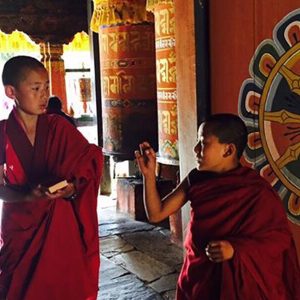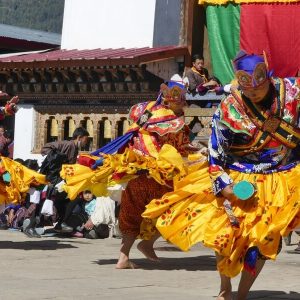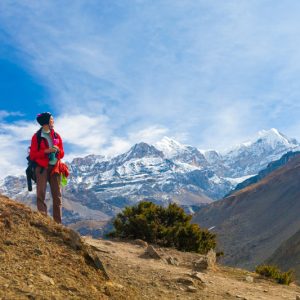Perched at an altitude of 3,988 meters, Chele La Pass is the highest motorable road in Bhutan — and the starting point for one of the country’s most spectacular day hikes.
This rewarding 2.5-hour trek leads you along a dramatic high-altitude ridge, through windswept alpine meadows, and ends at Kila Gompa, one of Bhutan’s oldest nunneries nestled on a cliffside
Trail Overview
- Starting Point: Chele La Pass (3,988 m)
- Highest Point: 4,230 m
- Ending Point: Kila Gompa Nunnery (approx. 3,500 m)
- Distance: 4–5 km
- Duration: 2 to 3 hours (mostly downhill)
- Difficulty: Moderate



A High-Altitude Experience Like No Other
From the very first step, the trail offers breathtaking panoramas of the Eastern Himalayas, with Mount Jomolhari (7,326 m) and Jichu Drakey (6,989 m) standing proudly on the horizon. On a clear day, the entire range seems within arm’s reach, a dream for nature lovers and photographers alike.
The trail gently climbs to its highest point at 4,230 meters, offering a true sense of being above the clouds. Along the way, hikers pass through open alpine meadows blanketed with seasonal wildflowers in vibrant hues.
If you’re lucky, you’ll find yourself hiking through:
- Fields of blooming irises
- Tall yellow Sikkim Cowslip (Primula sikkimensis) — a species native to Bhutan and Eastern Nepal
- Himalayan blue poppies, though now rarer due to foot traffic
- Foxgloves, Japanese meadowsweet, asters, wild geranium, Chinese hound’s tongue, and lily of the valley
Whether you’re a serious botanist or a casual trekker, these natural bursts of color make the hike feel enchanted.



Cultural and Spiritual Highlights
This is more than just a scenic hike — it’s a spiritual journey, too. As you follow the ridge, you may come across Sky Burial sites, a traditional Himalayan practice that reflects the deep spiritual connection to impermanence and the natural cycle of life.
Further along the path, you’ll find a solitary meditation cabin, where hermits once lived in quiet retreat for months or even years. These moments of stillness add a contemplative element to the hike, inviting you to pause and reflect amid nature’s grandeur.



The Final Descent: Kila Gompa Nunnery
The trail ends at Kila Gompa, a serene and humble monastery clinging to the cliffside — often referred to as Bhutan’s “Sky Nunnery.” Home to around 60 Buddhist nuns, this sacred site is one of the oldest nunneries in Bhutan, dating back to the 9th century, and founded by Chogyel Norbu.
The name “Kila” comes from two syllables:
- “Ki” meaning peaceful
- “La” meaning mountain
Shrouded in mist and pine forests, the monastery exudes peace. Visitors can sometimes hear the soft murmur of chants or catch a glimpse of the nuns in quiet prayer, continuing their age-old spiritual practice.
You’ll see small meditation cells built into the rockface, a golden-roofed prayer hall, and possibly hear the soft hum of chants echoing through the pine-scented air. While most visitors don’t enter, simply sitting outside and absorbing the serenity is reward enough.
Practical Tips
What to Bring:
- Warm layers (even in summer, weather can change quickly)
- Water and snacks
- Sun protection (UV is stronger at altitude)
- Good hiking shoes with grip
- Camera or phone for wildflowers and vistas
Altitude Caution:
Though the trail descends, you’re still hiking above 3,000 meters. Take it slow, hydrate well, and rest if you feel lightheaded. Avoid this hike on your first day in Bhutan — allow time to acclimatize.
Best Time to Hike:
- Spring (March–May): Wild rhododendrons, crisp views
- Monsoon (June–August): Dense cloud forests, primulas and irises
- Autumn (September–November): Clear skies, golden light
- Winter: Possible snow, slippery paths — check with local guides













